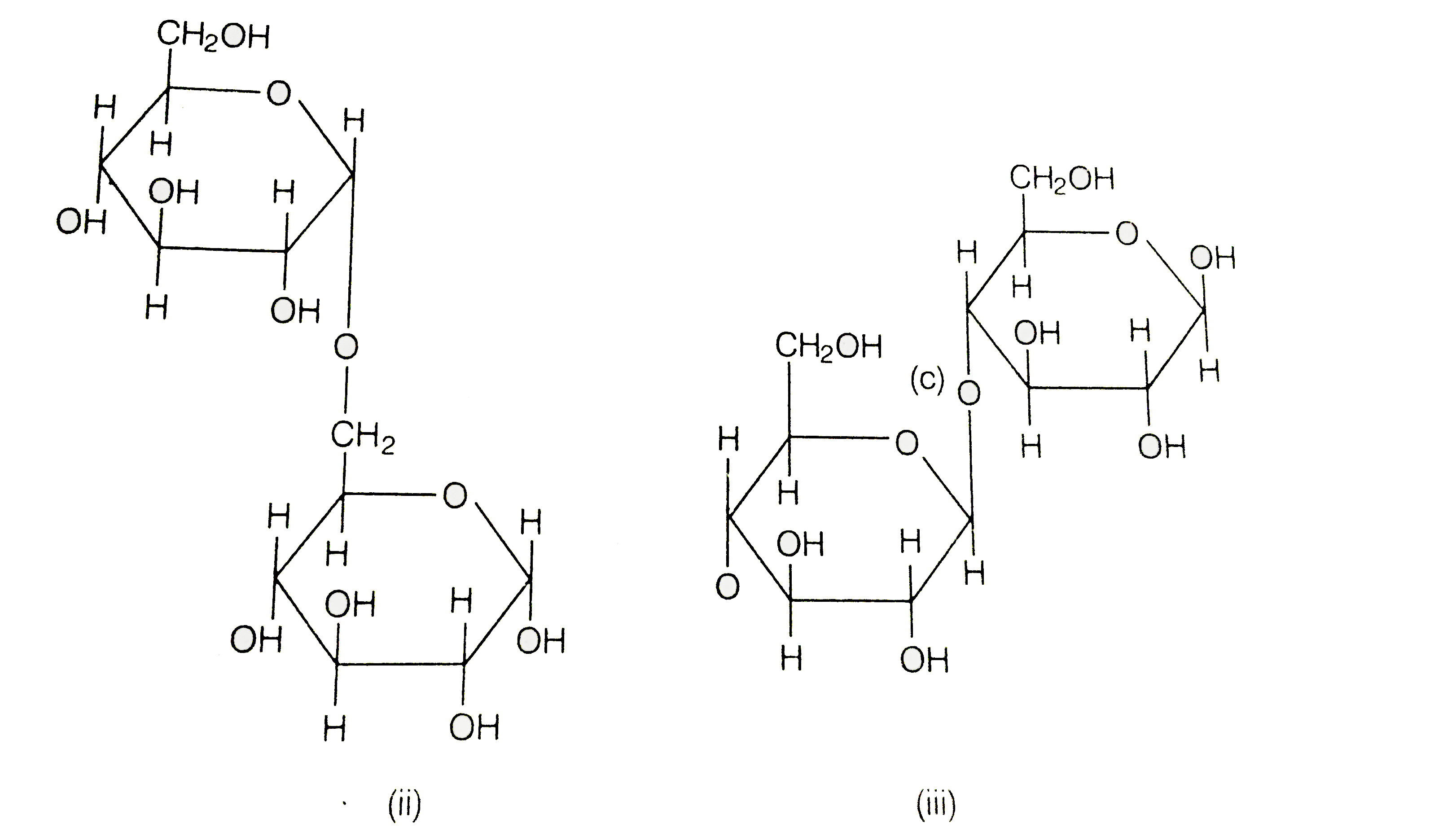In amylose fraction, glucose residues are linked by
α 1 - 4 linkages
β 1 - 4 linkages
α 1 - 6 linkages
β 1 - 6 linkages
To answer the question regarding how glucose residues are linked in the amylose fraction, we can break it down into the following steps:
Step 1: Understand the Structure of Starch
Starch is a polysaccharide that serves as a storage form of energy in plants. It is composed of glucose units.
Hint: Remember that starch consists of two main components: amylose and amylopectin.
Step 2: Identify the Components of Starch
Starch is made up of two types of molecules: amylose and amylopectin. Amylose is a linear polymer, while amylopectin is branched.
Hint: Focus on the structure of amylose, as the question specifically asks about it.
Step 3: Recognize the Type of Linkage
In amylose, glucose units are linked together through glycosidic bonds. The specific type of glycosidic bond that connects the glucose residues in amylose is crucial to understanding its structure.
Hint: Glycosidic bonds can be classified based on the carbon atoms involved in the linkage.
Step 4: Determine the Specific Linkage in Amylose
In amylose, the glucose residues are linked by alpha-1,4-glycosidic bonds. This means that the first carbon of one glucose molecule (C1) is linked to the fourth carbon (C4) of the next glucose molecule.
Hint: Pay attention to the numbers in the linkage; they indicate which carbon atoms are involved.
Step 5: Conclude the Answer
Based on the understanding of amylose and the type of glycosidic bond it contains, we conclude that in the amylose fraction, glucose residues are linked by alpha-1,4 linkages.
Final Answer: In amylose fraction, glucose residues are linked by alpha-1,4 linkages.
Starch is a polysaccharide that serves as a storage form of energy in plants. It is composed of glucose units.
Starch is made up of two types of molecules: amylose and amylopectin. Amylose is a linear polymer, while amylopectin is branched.
In amylose, glucose units are linked together through glycosidic bonds. The specific type of glycosidic bond that connects the glucose residues in amylose is crucial to understanding its structure.
In amylose, the glucose residues are linked by alpha-1,4-glycosidic bonds. This means that the first carbon of one glucose molecule (C1) is linked to the fourth carbon (C4) of the next glucose molecule.
Based on the understanding of amylose and the type of glycosidic bond it contains, we conclude that in the amylose fraction, glucose residues are linked by alpha-1,4 linkages.
Topper's Solved these Questions
- MOLECULES OF THE CELLBook:DINESH PUBLICATION ENGLISHChapter:MOLECULES OF THE CELLExercise:RQ
Explore 649 Videos
- MICROBES IN HUMAN WELFAREBook:DINESH PUBLICATION ENGLISHChapter:MICROBES IN HUMAN WELFAREExercise:Brain Teasers-VIII
Explore 60 Videos
- MOLLUSCABook:DINESH PUBLICATION ENGLISHChapter:MOLLUSCAExercise:CYG
Explore 10 Videos
Similar Questions
Knowledge Check
Glucose is:
AmonosaccharideBdisaccharideCtrisaccharideDpolysaccharide2.82g of glucose is dissolved in 30g of water. The mole fraction of glucose in the solution is
A0.01B0.99C0.52D1.66
Glucose is
View SolutionGlucose is
View SolutionGlucose is
View SolutionSuccessive glucose residues in a cellulose molecule are linked by
View SolutionThree structures are given below in which two glucose units are linked. Which of these linkages between glucose units are between C1 and C4 and which linkages are between C1 and C6?


View SolutionRead the given statements.
(i) Fructose is the sweetest sugar.
(ii) Glycine is the simplest amino acid.
(iii) Lactose is a disaccharide composed of one molecule each of glucose and galactose.
(iv) Cellulose is an unbranched chain of glucose molecules linked by β−1, 4-glycosidic bond.
Which of the given statements are correct ?
View Solution